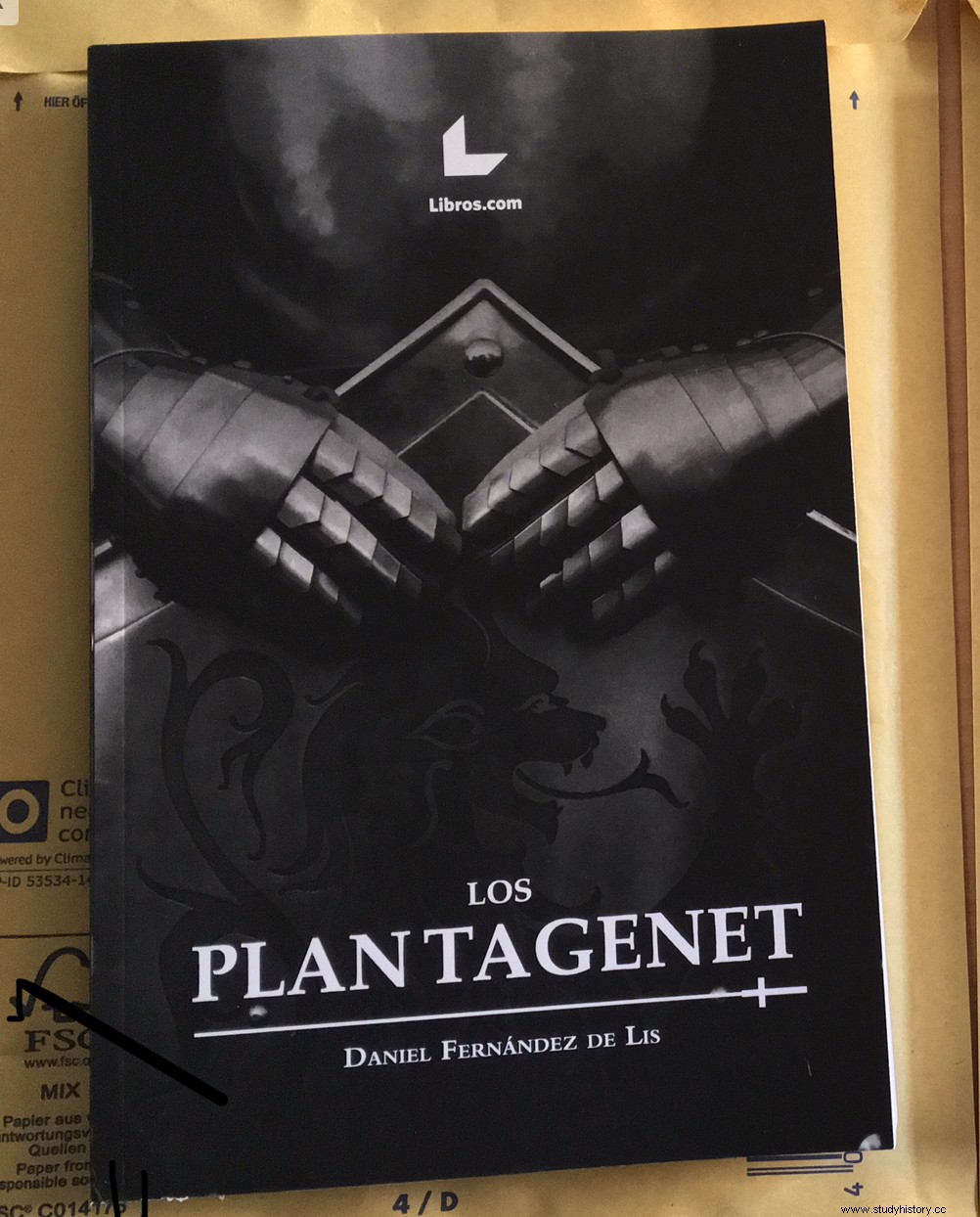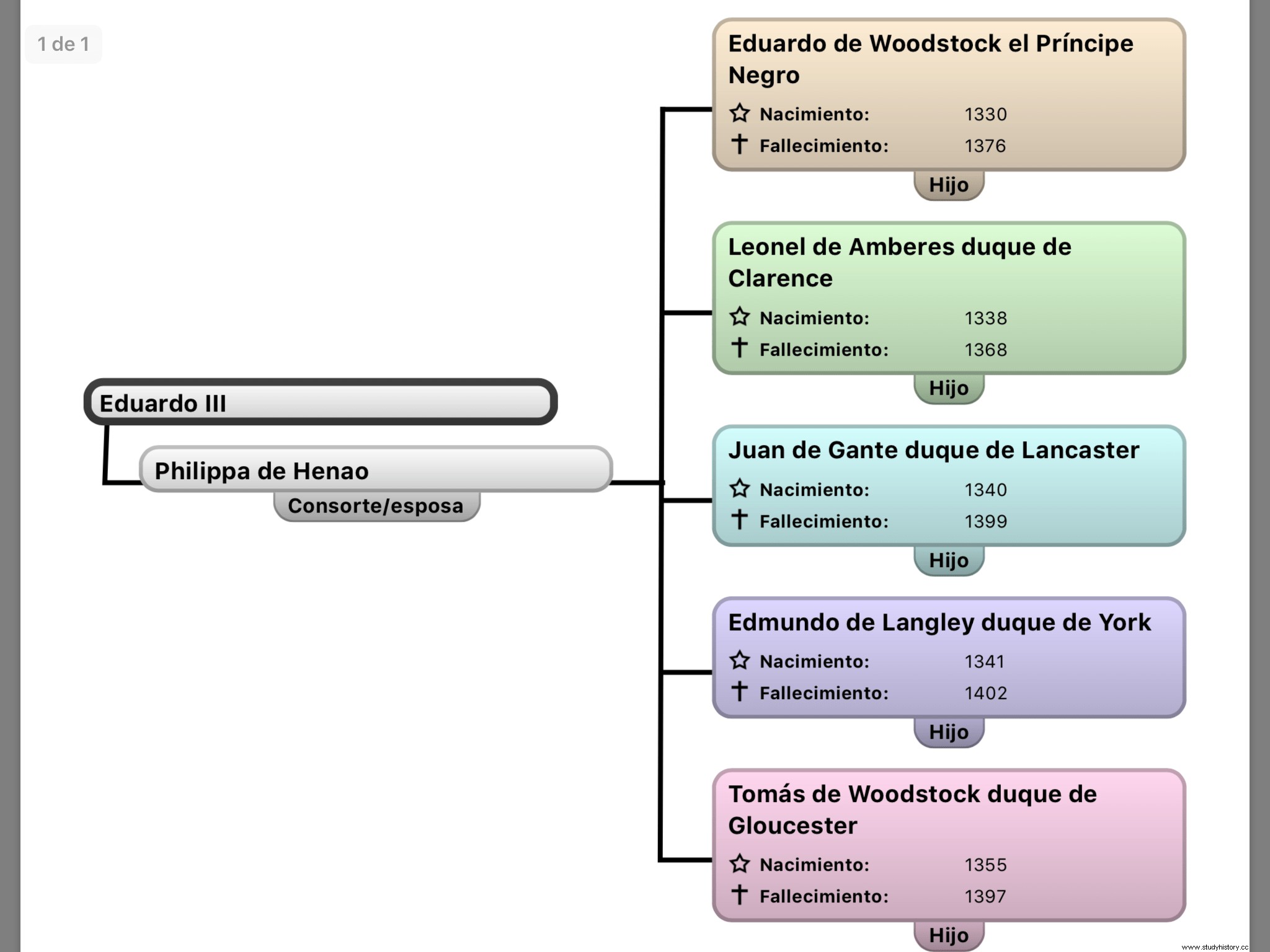Entry extracted from the book The Plantagenets 
The regulars of the blog will be familiar with the war conflicts that, although they were not named that way at the time, have gone down in history with the war names of the Hundred Years ( 1337-1453) and the War of the Roses (1455-1485). Just by looking at the dates on which one and the other event took place, it is evident that both almost overlapped in time and that the end of the first almost coincided with the beginning of the second. But the relationship between the two wars goes beyond the temporary and there is an event that explains that relationship and that is the link between them:the Treaty of Tours, signed on May 22, 1444.
After the overwhelming English victory over France at the Battle of Agincourt in 1415, the Treaty of Troyes had been signed in 1419, arranging the marriage of Henry V of England with the daughter of the French king, Catherine de Valois, and the English monarch was recognized as heir to the French crown. The couple had a son in 1421 (the future Henry VI) and everything looked rosy for the English. But Henry V died in 1422.
Her unforeseen death was a turning point in the conflict. The new English king was no more than a child and, between internal struggles for power in England and in the English possessions on the continent, figures such as King Charles VII emerged in France, who was willing to reconquer his entire kingdom, and Juana of Arco, the warrior maiden of Orléans. The French began to turn around a conflict in which they had frequently come out badly.
When Henry VI came of age and took over the government, he showed that he had not inherited the warrior qualities of his father. He did not want to take part in the war nor did he want to allocate the necessary funds to support the English army on the continent. To try to find a peaceful solution and a graceful exit for the English, he put himself in the hands of one of his trusted men, William de la Pole, Earl of Suffolk (in the image).
After many negotiations, De la Pole announced that he had signed a peace agreement with France, the Treaty of Tours. The part that was made public stated that Henry VI's marriage to Margaret of Anjou had been arranged. For the sake of peace, the English could forgive the fact that the bride came without a large dowry under her arm, despite being the niece of the King of France and her father displaying the impressive but empty titles of King of Naples and Sicily and even who wielded a supposed right to the throne of Jerusalem.
But the treaty included a clause that the Earl of Suffolk did not initially make public, but which soon became known. That was what the English did not forgive De la Pole, who ceded with a stroke of the pen to the French king the immense territories of Anjou and Maine that they had shed so much blood to preserve and from which the enemy used as a launch pad to reconquer Normandy and Brittany. .
The protests of the Marquess of Suffolk (the king had awarded him that title for his services) about the impossibility of winning a war that his king did not want to wage and for the that he had no funds. De la Pole fell into disgrace and was called to account in Parliament. Many of his outraged members demanded his head from him, but the king mediated and he was sentenced to exile. When he crossed the English Channel on his way to the East, his ship was assaulted with military precision without the crew offering resistance, De la Pole was captured and executed by the assailants as a traitor. His headless body appeared on Dover beach on May 2, 1450.
The towns of the English east coast were filled with fugitives from France who had lost everything. The waters of the canal were freely crossed by French and Castilian ships that pillaged English ships and towns alike. There was a popular rebellion that caught fire in Kent and was led by a certain Jack Cade. The rebels headed towards London and threatened to take the city.
At that time he returned from Ireland, where the king had sent him, a key character in the events that were to come. His name was Richard Plantagenet, Duke of York. The revolt was subdued and York petitioned Parliament to be appointed head of the Royal Council to replace his enemy, the Duke of Somerset, and to be recognized as heir to the throne. Parliament denied both petitions and the Duke of York withdrew to his possessions in the north.
But the germ of the conflict was already planted. And that germ was none other than Richard Plantagenet considered himself with a better claim to the throne than Henry VI. And when he fell under a mental illness that made him unable to rule, Richard (who initially had no intention of disputing the throne, but to be designated his heir) stepped forward and claimed the crown for himself. In this way, the consequences of the signing of the Treaty of Tours in 1444, which was the swan song of the Hundred Years' War, were the spark from which the War of the Roses arose.
But why was Richard of York considered to have a better claim to the throne than Henry VI? Normally in my posts I pointed above the reasons for the origin of the War of the Roses to focus on the subject of the article. But since many questions have been raised about the causes of this war, and even why it is known by the name of de las Rosas, today I will explain in detail those causes. I start the exhibition with a family tree that can help to follow it.

Let's get started. To clarify ourselves well in the dynastic tangle from which the struggle between the Yorks and the Lancasters germinated, we have to place ourselves in the year 1377, when King Edward III dies. His eldest son Edward the Black Prince had died a year earlier, so his son, Richard II, succeeded him. But in 1399 Richard (who had no children) was deposed by his cousin Henry IV, son of John of Gaunt, Duke of Lancaster, third offspring of Edward III. His son, Henry V, and his son, Henry VI, had succeeded him. That is to say that the reigning monarch and all descendants of him, if there were any in the future, came from the third son of Edward III, the Duke of Lancaster.
But Richard Plantagenet, Duke of York, descended from Edward III in a double way. His mother, Anne Mortimer, was descended from his second son, Lionel of Antwerp; and his father, Richard of Conisburgh, was descended from his fourth son, Edmund of Langley, Duke of York.
As the offspring of Edward III's first son had become extinct when Richard II died childless, the Duke of York was convinced that as a descendant of both the second and fourth sons of the old king, his York branch of the family had a better claim to the throne than the Lancastrian branch represented by Henry VI. He always denied the stories that claimed that his father was not actually the son of Edmund of Langley, but had been the result of an adulterous relationship maintained by Edmund's wife, Isabella of Castile.
This cause, whose explanation I hope has not been too cumbersome, is the one at the origin of the War of the Roses. As for the name of the conflict, it comes from the emblems that the contending sides supposedly used to identify themselves:a red rose for the Lancasters and a white rose for the Yorks. Actually this identification is later. The white rose was one of the many emblems used by the Yorks and the red one was used by the Lancastrians near the end of the conflict (circa 1480). In its time it was known as the War of the Cousins. The name Guerra de las Rosas is quite a bit later.
